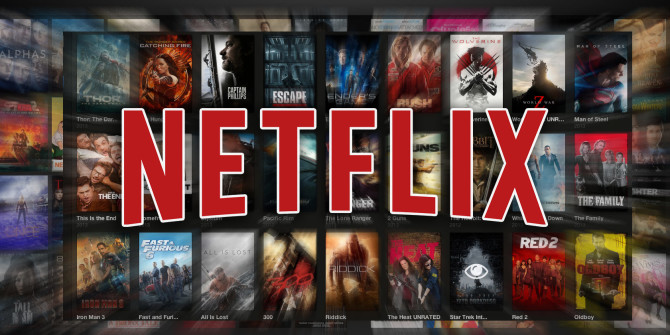Semalt Advice On How To Personalize On-Site Content With Examples

Creating a unique experience for your audience can go a long way in strengthening brand loyalty. Many of the "Big Brands" you see today have developed strategies that give their audience exceptional experience and drive revenue and engagement with personalized content.
Your products are designed to meet specific needs, and your content should be designed to meet those needs. It shouldn't be too dynamic or else, it may not function as you anticipated or have any meaningful effect at all.
Well-experienced websites have noticed that personalized content is indeed one of the most effective tools to use throughout the buyer's journey. Consumers love to see personalized content because it shows how much research and detail you've put into your content. To create one of these, you need a detailed understanding of your audience and their behaviors on the internet and in their daily lives.
In this article, we will be explaining the effects of personalized content using three known brands. We will also share how small businesses can learn from them and implement their own version of personalized content that is more affordable and realistic to their needs.
Creating On-Site Personalized Content
Dozens of businesses are reaching out to your target audience every day, making it more difficult for your business to stand out. Here are some ideas on how you can personalize the content on your site.
Understand your audience

Knowing your audience is the first step you take in creating content that appeals to your target audience. It will be impossible to successfully personalize the experience on your site if you do not know what your audience likes and how they will prefer to view content.
Learning and understanding your audience helps you define their needs and connect with them. In this case, we will be defining your audience as a group of visitors on a site with specific needs and similar backgrounds.
To understand your audience, there are three types of data you should look into:
- Behavioral Data: In this case, you will be answering the question "Why?" why are your visitors clicking on your links? Do they want to make a purchase, browse your content or respond to a CTA? Understanding behavioral data gives you insight into how your visitors interact with your site. Think of it as your conversation history with your audience.
- Contextual Data: here, we gather information about the situation of your visitors when they arrive at your site. This data considers things like what device or browser is being used by the visitor. It also considers metrics like what channel was used, they are new or returning visitors.
- Demographics: Here, we collect data on the geographical location of the visitor using their IP addresses. We also try to understand other factors like age, sex, occupation, habits, and interests.
Knowing this information will help you create a complete audience profile, and with this knowledge, we can create several buyer personas and target each one accordingly. Although buyer personas are a fundamentally fictional representation of actual buyers, they do a great job of pointing us in the right direction.
In addition to understanding your target audience, it is also important to understand the issues or problems of your target audience. To be relevant to your audience, you need to understand what problem they need solving or what issues they have in their daily lives. When you understand their problems, it becomes easier to present your product or services as the solution.
Display Custom Messages on Your Homepage
Creating custom messages on your homepage for visitors is another great way to stand out. When visitors get to your homepage, they should be welcomed with a unique feeling of warmth and value. Having a custom message on your homepage is one way to welcome them with open arms. It personalizes their experience and shows them that you value their presence.
For example, let's say you run a cosmetic business. Businesses like these usually target women between 18-45 because they tend to be more interested in cosmetics. So when these women visit your page, you could have a sweet message like "hello, {brand name} welcome to our store, and we hope you are having a wonderful day." As simple as this may sound, it shows your audience that you're not just focused on getting their money.
Even the smallest gesture of personalization can significantly impact your audience. Not only will it help them feel welcomed, but it also expedites the shopping process. In cases where your personalized messages lead directly to a product, consumers spend less time searching for the right products.
Create Content that Interests Your Audience
Content marketing plays a vital role in content personalization. With the right strategy, content marketing helps you create interesting and compelling content in your industry. With content marketing, you understand what to create and when to publish your content.
One of the best personalization strategies is to focus on topics that interest your audience. Try not to dwell too much on what's trending but focus on what your audience wants to know about your industry. Tools like Google trends can help you find what topics to focus on. Considering that you are an expert in your industry and you have sufficient knowledge, it will be easy to create content that interests your audience. Sharing your knowledge will attract interesting leads to your business.
Conducting surveys is another way to learn what your audience really expects to see on your site. From the insights you gather, you can identify new content ideas and content gaps. In your survey, you get to ask your target audience what they would have liked to see on your site, what would have made them convert sooner, or if there is anything they feel is missing from your site.
It is important to evaluate your current customer base as they can tell you what prospective consumers will be looking to see on your site.
Examples Of Brands Who Use Personalized On-Site Content
Netflix

With over 209 million subscribers, Netflix is still able to offer surprisingly accurate personalized content for every user. Don't you find it interesting how AI knows what interests you and your family? All of this starts with data collection.
Netflix understands not just who its customers are but also how they interact with the platform. With secrete tools like:
- Personalized recommendations
- Trends
- Original content
Netflix is able to "see into the minds" of its users. It gathers information and then uses this data to create specific and personalized experiences for every account.
Aveda
By using specially designed quizzes, Aveda creates a unique and interactive experience for its visitors. Statistics suggest that about 80% of consumers are more likely to shop from brands that provide a personalized experience.
Successful beauty brands like Aveda are able to offer personalized, on-site experiences because they learn about the needs of every consumer. By asking a series of questions, Aveda arrives at tailor-made products which are unique to the individual's needs. These tactics also keep visitors on their site longer as they are guided towards purchasing the right products or services.
In most cases, the visitor will enter their names and email result, which is also smart. With the survey, they can send personalized emails and use them in their marketing campaigns without the need to ask visitors to sign up.
Conclusion
This article shows you some ways websites can personalize on-site content, but we've only scratched the surface. With new advancements in technology, on-site personalizations and the overall experience can become more engaging and inventive.
Brands can learn more about their audiences, and visitors expect brands to be more informed on what they want. As you visit your favorite brand's website, take note of what they do to make their content exclusive and personalized to you. Then ask yourself how you can personalize your content to give your audience a similar experience on your website.
